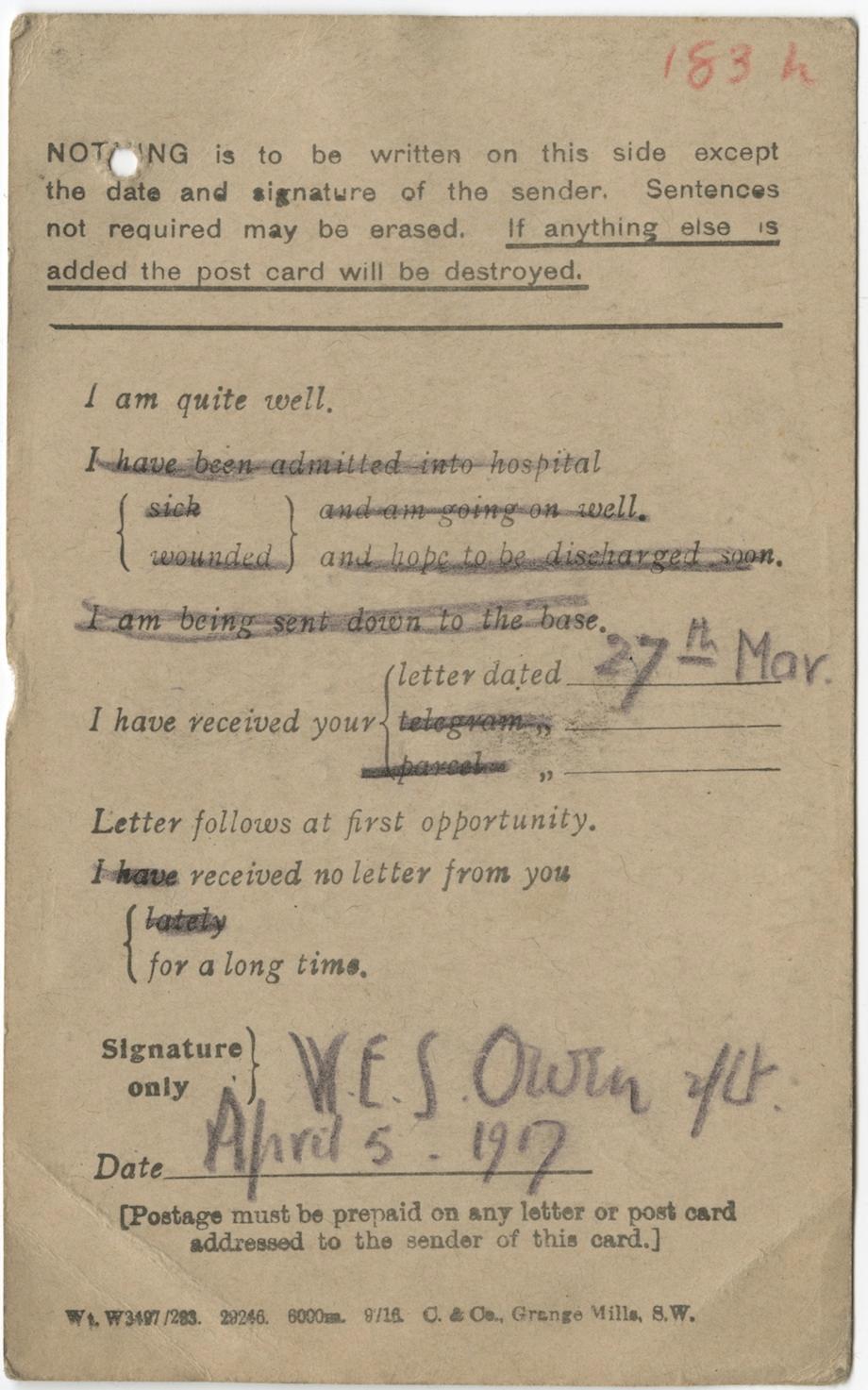The Vault is Slate’s new history blog. Like us on Facebook, follow us on Twitter @slatevault, and find us on Tumblr. Find out more about what this space is all about here.
Starting in November 1914, the British Army produced reams of Field Service Postcards for soldiers’ use. Through this brief communication, families could have proof that their sons were alive without receiving any information about their actual movements or the seriousness of any wounds they might have suffered. Moreover, the open format of the postcard made military censorship easy.
This particular postcard was completed by poet Wilfred Owen and sent to his mother, Susan. Jean Cannon, of the Harry Ransom Center (which holds this card along with many of Owen’s papers), writes that Owen and his mother had arranged a code to circumvent the card’s restrictions. If Owen was about to travel to the front, he would strike out the sentence “I am being sent down to the base” with a double line.
Owen sent this card when he knew he was to be transferred to the interminable Battle of the Somme—an offensive that began 97 years ago Monday. There he was wounded and was sent to a hospital in Scotland, where he began writing his terrifying, visceral war poems.
The second image here, of a 1929 letter from poet Edmund Blunden to poet Siegfried Sassoon, shows how the writers who fought in the war appropriated the form of the service postcard as satire.

A standard British Army Field Service Postcard sent from Wilfred Owen to his mother, Susan Owen, on April 5, 1917. Image courtesy of the Harry Ransom Center.

Letter from Edmund Blunden to Siegfried Sassoon, dated March 30, 1929. Image courtesy of the Harry Ransom Center.